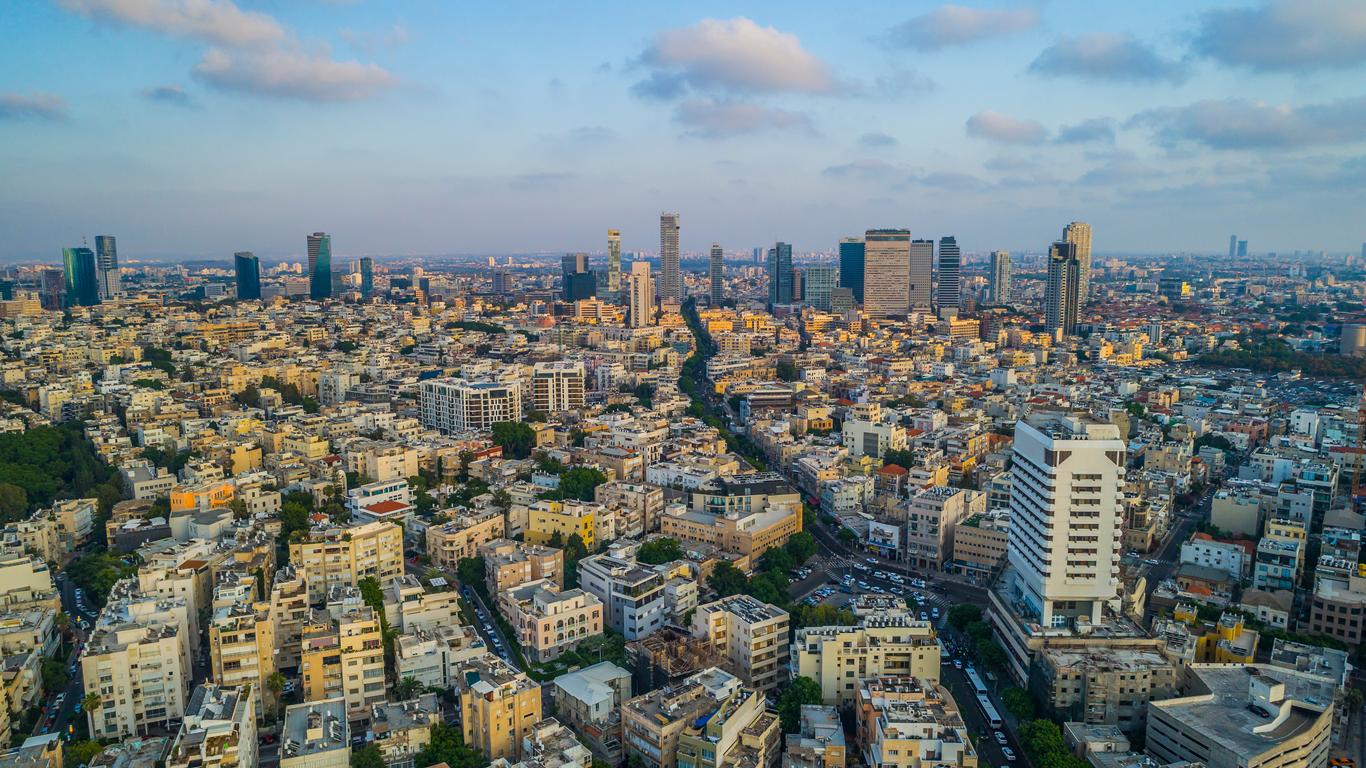Gorgeous beaches, world-class cultural attractions and a dynamic culinary scene make Central Tel Aviv one of the most captivating destinations in the Middle East. The party continues well after dark, with Central Tel Aviv home to some of the best bars, clubs and live music venues in the country.
Things to do in City Center
Bask in the sunshine and swim in the turquoise Mediterranean Sea on Gordon Beach. Sun loungers dot the sand and attract a mix of locals and tourists. Work up a sweat at the outdoor gym, test your balance on a paddleboard and take part in a high-energy Zumba class. Tel Aviv stretches along the coast and connects Gordon Beach with other popular stretches of sand, while benches offer a perfect vantage point to watch beach volleyball games or enjoy an ice cream.
Admire masterpieces by icons like Monet, Van Gogh and Renoir at the Tel Aviv Museum of Art. The collection is housed in a striking contemporary building designed by acclaimed American architect, Preston Scott Cohen. Don’t miss the galleries dedicated to Israeli artists like Reuven Rubin and Nahum Gutman.
Park HaYarkon is a green oasis in the heart of Central Tel Aviv. Stroll along tree-lined paths, enjoy a picnic on the grass and see thousands of species of plants in the Rock Garden. Cool off in the family-friendly Meymadion Water Park and cruise around the lake in a pedal-powered boat. The park moonlights as an atmospheric venue for outdoor concerts, festivals and other events.
From trendy restaurants run by celebrity chefs to family-run eateries specialising in shawarma, falafel and pita, you’ll quickly see why Tel Aviv is celebrated as the culinary capital of the Middle East. Splurge at chic brasseries serving Mediterranean-inspired dishes and fill up on classic Israeli street food like “sfenj” sugar-coated donuts, “shakshuka” poached eggs cooked in a rich tomato sauce and “sabich” sandwiches stuffed with fried eggplant.
Getting around City Center
Central Tel Aviv is pedestrian-friendly and easy to get around on foot or by bicycle. Buses are a fast and easy way to get around the city and cover longer distances. Taxis operate across the city. Ben Gurion Airport is a 30-minute drive away.





